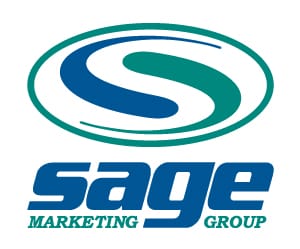At the bottom of 99.9% of websites is a non-mystical space we refer to as The Footer. It’s something that you may not give much thought to when visiting a website, unless of course you are looking for some contact info. While subtle, footer design is an important component of any website. It could be thought of as the foundation upon which the entire site is built really, similar to the header – as they are both present across the entire site.
There are some industry standards that are commonly practiced in footer design, and then there are those outliers that disregard everything we know about footer space. If that’s you, feel free to take any of this information to heart, and consider leaving giant paragraphs of text or photo galleries out of the footer of your website. And if you really do prefer to cram all the important content from your site, into the footer, then I’m excited to see if a “footer-only-website” trend takes off.
Back to the task at hand. Let’s look at what we know to be common in footer layout.
THIS IS IMPORTANT. If anyone ever tells you that it’s a bad idea to put contact information in the footer, I’d advise that you leave the conversation in as quick and polite a manner as you can. Consumers know and expect to be able to find, at a minimum, a link to a full contact page. At maximum, the information listed right there: name, address, email, phone number, etc.
There are a few instances that this may not apply. Here is an example:
Your website’s entire purpose is to showcase the life of a banana tree (which actually isn’t a tree at all). It’s essentially a page filled with interesting facts about how they only produce one bunch of fruit and then die and have to start growing all over again from the rhizome base. I would say, this page doesn’t need a contact section in the footer. There’s just no need.
Having a second way to navigate through the pages of your site is handy for users. Sure there is most likely a header menu that they can access at any given point… but sometimes it just takes too much effort for people to scroll allllll the way back to the top of the page to find it. So instead, give them an easy way to navigate through your site via top OR bottom menu.
This rule could be ignored if you have a sticky header (as it’s always right there for users), OR if it’s only a one-page site.
This is a fairly standard element in footer design. It just sits at the bottom, unobtrusively offering free email updates to any curious users who may be dropping by. (Note, try not to spam people once they have signed up. They won’t stick around long if you do.)
This technically falls in the category of Contact Info, but it’s worth its own mention here. In a time when people often don’t want to pick up the phone and make a formal phone call, and sometimes even email can seem like a hassle, social media offers a very quick and almost friendly alternative as a contact method.
Again, similar to number four, this falls in the category of Contact information, and is especially important for a business with an actual location. Obviously an online service without a physical address wouldn’t need a map.
These five elements are very common and expected pieces of footer architecture. In addition to this, it’s occasionally fitting to include other items such as certification badges, a very short “About” snippet, etc. But beyond that, there’s not much else that warrants a spot in the footer itself. That’s what the rest of the page real estate is for.
With all that being said, may the footer design be with you!

125 S. HOWES, #1C
FORT COLLINS, CO 80521
We love questions. get in touch
Copyright © 2024 Sage Marketing Group, Inc. All Rights Reserved. Website designed and built by us of course! (Sage Marketing Group, Inc.)
The unrelenting determination and effort to create sweet projects that make our clients so happy they want to cry.
| Cookie | Duration | Description |
|---|---|---|
| cookielawinfo-checkbox-analytics | 11 months | This cookie is set by GDPR Cookie Consent plugin. The cookie is used to store the user consent for the cookies in the category "Analytics". |
| cookielawinfo-checkbox-functional | 11 months | The cookie is set by GDPR cookie consent to record the user consent for the cookies in the category "Functional". |
| cookielawinfo-checkbox-necessary | 11 months | This cookie is set by GDPR Cookie Consent plugin. The cookies is used to store the user consent for the cookies in the category "Necessary". |
| cookielawinfo-checkbox-others | 11 months | This cookie is set by GDPR Cookie Consent plugin. The cookie is used to store the user consent for the cookies in the category "Other. |
| cookielawinfo-checkbox-performance | 11 months | This cookie is set by GDPR Cookie Consent plugin. The cookie is used to store the user consent for the cookies in the category "Performance". |
| viewed_cookie_policy | 11 months | The cookie is set by the GDPR Cookie Consent plugin and is used to store whether or not user has consented to the use of cookies. It does not store any personal data. |